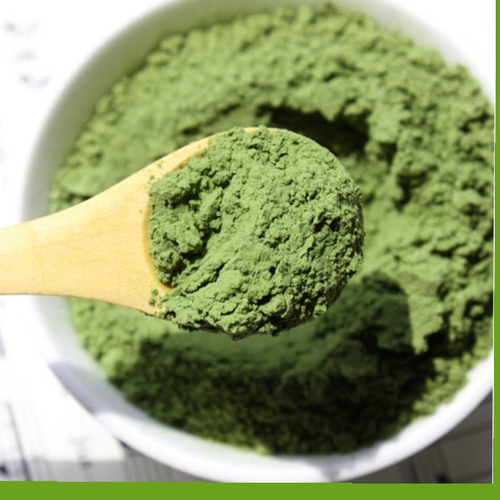Product Overview
Parts used: Dried leaves
TCM category: Herbs that cool the BloodHerbs that clear Heat and relieve Toxicity
TCM nature: Cold
TCM taste(s): Bitter
Meridian affinity: Stomach Heart
Scientific name: Isatis tinctoria
Other names: Isatis leaf, Big green leaf, Dyer's woad or Glastum
Use of woad leaves (Da Qing Ye) in TCM
Please note that you should never self-prescribe TCM ingredients. A TCM ingredient is almost never eaten on its own but as part of a formula containing several ingredients that act together. Please consult a professional TCM practitionner, they will be best able to guide you.
Preparation: Remove impurities, wash, and dry.
Dosage: 9 - 15 grams
Main actions according to TCM*: Clears Heat and toxicity from the Blood. Clears Heat associated with contagious febrile diseases.
Primary conditions or symptoms for which woad leaves may be prescribed by TCM doctors*: Fever Jaundice Dysentery Sore throat Erysipelas Carbuncles Sores Hepatitis Mumps Dizziness Ulcers Mouth ulcers Tonsillitis Pharyngitis Joint pain
Contraindications*: This herb should not be used by those with weak and Cold Spleen or Stomach.
Common TCM formulas in which woad leaves are used*:
For Blood-Heat, febrile illnesses, clouding of consciousness and/or exanthems combine woad leaves with goldthread rhizomes (Huang Lian), cape jasmine fruits (Zhi Zi), red peony roots (Chi Shao), mudan peony bark (Mu Dan Pi) and bugbane rhizomes (Sheng Ma).
For Heat in the Stomach and Heart with painful obstruction of the throat, sores in the tongue, mouth and throat combine woad leaves with woad roots (Ban Lan Gen), ningpo figwort roots (Xuan Shen), gypsum (Shi Gao), goldthread rhizomes (Huang Lian) and cape jasmine fruits (Zhi Zi).
For toxic Heat with sores, erysipelas, mumps and painful throat obstruction combine woad leaves with honeysuckle flowers (Jin Yin Hua).
For jaundice, hepatitis, cholecystitis and/or hypochondrial swelling combine woad leaves with peach kernels (Tao Ren) and safflowers (Hong Hua).
Key TCM concepts behind woad leaves (Da Qing Ye)'s properties
In Traditional Chinese Medicine (TCM), woad leaves are plants that belong to the 'Herbs that cool the Blood' category. Herbs in this category are used to clear inflammatory and infectious conditions, referred to as 'Internal Heat' in TCM. This is why most of the herbs in this category will have both antibacterial and antiviral properties. In TCM one has too much 'Heat' in their body as a result of a deficiency of 'Yin' (which is Cold in nature, see our explanation on Yin and Yang) or, more commonly, an excess of Yang (Hot in nature). Herbs that cool the Blood treat the latter and as such tend to be Cold or Neutral in nature.
As suggested by its category woad leaves are plants that are Cold in nature. This means that woad leaves typically help people who have too much "heat" in their body. Balance between Yin and Yang is a key health concept in TCM. Those who have too much heat in their body are said to either have a Yang excess (because Yang is Hot in nature) or a Yin deficiency (Yin is Cold in Nature). Depending on your condition woad leaves can help restore a harmonious balance between Yin and Yang.
Woad leaves also taste Bitter. The so-called "five elements" theory in Chinese Medicine states that the taste of TCM ingredients is a key determinant of their action in the body. Bitter ingredients like woad leaves tend to have a cleansing action on the body by clearing heat, drying dampness and promoting elimination via urination or bowel movements.
The tastes of ingredients in TCM also determine what organs and meridians they target. As such woad leaves are thought to target the Stomach and the Heart. In TCM the Stomach is responsible for receiving and ripening ingested food and fluids. It is also tasked with descending the digested elements downwards to the Small Intestine. In addition to regulating blood flow, the Heart is believed to be the store of the "spirit" which basically refers to someone's vitality.






